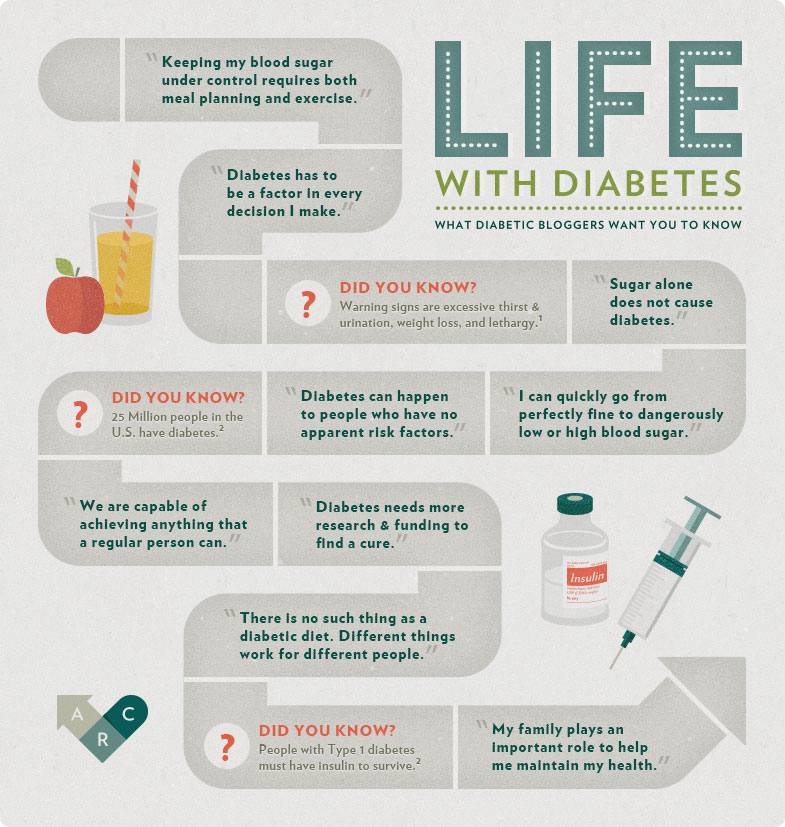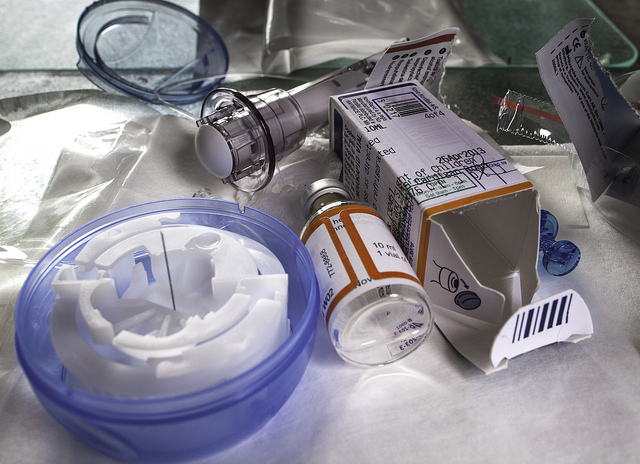While the month of October drew a great of attention to breast cancer, November sheds the spotlight on diabetes, the seventh leading cause of death in the U.S. As of 2011, according to the American Diabetes Association, 25.8 million, or 8.3 percent of the population, had diabetes. It is estimated that 90 to 95 percent of patients with diabetes have Type 2 diabetes.
Type 1 vs. Type 2 Diabetes
There are two distinct kinds of diabetes, Type 1 and Type 2. Type 1 occurs when individuals no longer can make insulin, a hormone created by the pancreas that is released when blood sugar rises. Insulin allows the cells, muscles and tissues of our body to take in a type of sugar that we get from carbohydrates, glucose, for energy. Insulin promotes the storage form of glucose, glycogen, by the liver. It also promotes protein synthesis in muscles and the conversion of glucose into fat in the fat cells. People with Type 1 need supplemental insulin to live.
People with Type 2 diabetes usually have problems with insulin resistance, where their muscles, liver and fat cells don’t use insulin properly, and with reduced insulin production. With the latter, glucose builds up in the bloodstream and gets excreted in the urine, instead of being used as the body’s main source of fuel.
Common symptoms of diabetes include excessive thirst, frequent urination and unexplained weight loss even when extremely hungry. Individuals may also notice a rapid vision changes, tingling or numbness in the hands or feet, extreme fatigue, increased number of infections, very dry skin and sores that are slow to heal
The Dangers of Pre-Diabetes
Unfortunately diabetes can go undiagnosed for an extended period of time because it initially can exist with no symptoms at all. Approximately 7 million Americans have the disease but do not know it. The longer type 2 diabetes is left untreated, the greater the damage it can cause on the body. Diabetes is the leading cause of kidney failure and of new cases of blindness in people 20-74 years old. The risk of stroke is two to four times greater in people with diabetes, according to the American Diabetes Association. The disease is also associated with increased risk of heart attack, hypertension (high blood pressure) and nerve damage, and in extreme cases, can lead to lower leg amputation.
People with Type 2 diabetes almost always have what is termed ‘prediabetes’, where blood glucose levels are higher than normal but not yet at levels where one would be diagnosed as diabetic. It is estimated that 79 million adults, 20 years and older, have pre-diabetes, according to the National Diabetes Education Program.
Outside of a family history and maternal diabetes in the womb, obesity and a sedentary lifestyle are the two most common indicators that you are at risk for developing Type 2 diabetes. Studies have shown that improving your diet and increasing physical activity, resulting in weight loss, can prevent or delay pre-diabetes from progressing to diabetes. The good news about this is that there are lifestyle changes one can make to prevent getting Type 2 diabetes, or if you have already have it, to help control it.
Foods that Feed Diabetes
 One huge step to take toward prevention is to avoid foods (and beverages) with simple sugars that cause high spikes in blood glucose. These include soda, energy and sports drinks, as well processed foods like packaged baked goods and cereal. Artificial sweeteners, with the exception of Stevia fit into this category as well. Fruit juices can be just as harmful, lacking fiber of the whole fruit to slow the absorption of glucose into the blood. These foods promote insulin resistance and hyperglycemia, a condition where there is an excess of glucose circulating in the blood.
One huge step to take toward prevention is to avoid foods (and beverages) with simple sugars that cause high spikes in blood glucose. These include soda, energy and sports drinks, as well processed foods like packaged baked goods and cereal. Artificial sweeteners, with the exception of Stevia fit into this category as well. Fruit juices can be just as harmful, lacking fiber of the whole fruit to slow the absorption of glucose into the blood. These foods promote insulin resistance and hyperglycemia, a condition where there is an excess of glucose circulating in the blood.
Simple carbohydrates found in refined grains, like breads, pasta and rice, stripped of fiber, also cause blood sugar to rise more sharply and more quickly than their whole grain counterparts as they are broken down and digested quickly. Sweet and starchy vegetables like potatoes, beets, and cooked tomatoes can have the same effect, according to Dr. Bernstein, author of Diabetes Solution.
Because diabetes is thought to speed up cardiovascular disease, Dr. Joel Fuhrman, a physician specializing in nutritional medicine, suggests staying away from foods that increase cardiovascular risk, such as those that contain trans fat, including margarine, shortening, fried food, fast food and processed baked goods. Trans fat really should be eliminated from all of our diets, and the FDA is now making a move to ban it.
There are conflicting recommendations about animal protein. While it’s clear that processed meat has negative cardiovascular and diabetic effects, the jury is still out on red meat. Some suggest eating a lot of animal protein may cause insulin resistance, while others have reversed their diabetes with a diet primarily of meat and vegetables. In such cases, grass-fed, free-range meats are the best option.
Foods to Fight Diabetes
 Foods that are good for the heart also can be beneficial for diabetes. Consuming higher levels of omega 3, found in salmon—or flaxseed—can bolster cells sensitivity to insulin, decreasing the development of diabetes.
Foods that are good for the heart also can be beneficial for diabetes. Consuming higher levels of omega 3, found in salmon—or flaxseed—can bolster cells sensitivity to insulin, decreasing the development of diabetes.
Foods with a low glycemic load (GL) that are nutrient-dense are highly recommended for diabetics. Increased intake of nutrient-dense leafy green vegetables are associated with decreased risk of Type 2 diabetes. Unrefined, or complex, carbohydrates, packed with fiber, vitamins and minerals, are absorbed by the body more slowly and provide longer-lasting energy, making them a better option for diabetics. Vegetables that don’t spike the blood sugar include asparagus, broccoli, cabbage, eggplant, sauerkraut, string beans, turnips and zucchini. Limit intake of fresh fruits, and only consume those with a lower GL, like kiwi, berries, oranges and melon, which are rich in antioxidants and fiber.
Monounsaturated fatty acids, or MUFAs, like those found in avocado, seeds and nuts play a big role in controlling blood sugar, reducing insulin resistance and fighting the belly fat associated with prediabetes and diabetes, according to LiveMint. Pumpkin seeds are especially effective at raising insulin sensitivity in the body. Consumption of walnuts, high in alpha-linolenic acid has been associated with decreased diabetes risk.
Make Time for Movement
Besides improving nutrition, daily movement is important at reducing diabetes risk. “Exercising improves the ability of the muscles to use insulin and absorb glucose. Try to combine resistance training with your cardio sessions for best results,” said Ritika Mehta, a nutritionist and certified diabetes educator based in Delhi.
Muscles burn stored glycogen as fuel during and after exercise at an accelerated rate.
Learn more about Life With Diabetes at The American Recall Center.


I love your diagram. And great easy to read explanation. My husband has diabetes, his father did as well. I will share this with him. Thanks for doing your work to inform so well! Cathy T